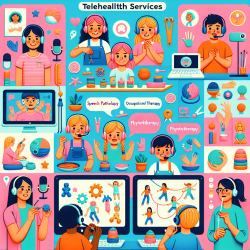In the realm of special education, Individualized Education Program (IEP) planning and meetings serve as critical junctures in defining the path of support and intervention for students with speech and language difficulties. As Speech-Language Pathologists (SLPs), we are not just participants in this process; we are pivotal figures whose expertise and insights can profoundly influence the educational and personal outcomes for our students. The task, while significant, requires a delicate balance of knowledge, empathy, and advocacy, ensuring that every IEP meeting is a step toward self-actualization for both the professional and the student.
The journey of an IEP meeting, from preparation to execution, is an opportunity for SLPs to embody the essence of self-actualization. It is a process that demands a deep understanding of the student's needs, strengths, and potential growth areas, as well as the ability to communicate these effectively to parents, teachers, and administrators. This guide aims to inspire Speech-Language Pathologists to approach IEP planning and meetings with confidence, clarity, and a renewed sense of purpose.
Understanding the IEP Landscape
Before diving into the specifics of IEP planning and meetings, it's crucial to grasp the broader context of special education. The landscape is ever-evolving, with technological advancements such as online therapy jobs offering new avenues for delivering support. Keeping abreast of these changes not only enhances our toolkit but also positions us as forward-thinking contributors to our field.
Preparation: The Foundation of Success
Preparation is the cornerstone of a successful IEP meeting. This phase involves thorough documentation review, goal setting, and strategy formulation. Here are key steps to consider:
- Review Previous IEPs and Progress Reports: A comprehensive understanding of the student's history is indispensable. This review helps identify progress trends and areas needing further intervention.
- Engage with the Student and Parents: Direct engagement provides insights into the student's and family's perspectives, which are crucial for setting realistic and meaningful goals.
- Set SMART Goals: Goals should be Specific, Measurable, Achievable, Relevant, and Time-bound. This clarity aids in creating focused intervention strategies and monitoring progress.
Collaboration: The Heart of the IEP Process
IEP meetings are collaborative efforts. As SLPs, our role extends beyond presenting reports; it involves active listening, empathy, and advocacy. Effective collaboration includes:
- Building Relationships: Establishing trust with parents, teachers, and other professionals lays the groundwork for productive discussions and mutual support.
- Communicating Effectively: Clear, jargon-free communication ensures that all parties understand the student's needs, the proposed interventions, and the rationale behind them.
- Advocating for the Student: Our expertise positions us to advocate for the student's best interests, ensuring that the IEP provides a comprehensive plan that addresses both immediate needs and long-term goals.
Execution: Leading with Confidence and Empathy
The actual IEP meeting is a moment to lead with both confidence and empathy. It's where preparation and collaboration converge to create a plan that aligns with the student's best interests. Strategies for a successful meeting include:
- Staying Focused on the Student: Keeping the student's needs at the forefront ensures that the meeting remains goal-oriented and productive.
- Facilitating Open Dialogue: Encouraging questions and discussions helps demystify the process for parents and fosters a collaborative atmosphere.
- Documenting Decisions and Actions: Clear documentation of the meeting's outcomes is essential for accountability and future reference.
Reflection and Follow-up: The Path to Continuous Improvement
After the IEP meeting, reflection and follow-up are vital steps toward ensuring the plan's success. This includes:
- Reviewing the Meeting: Reflecting on what went well and areas for improvement helps refine future practices.
- Communicating with the Team: Keeping all stakeholders informed about the meeting outcomes and next steps promotes continued collaboration and support.
- Monitoring Progress: Regular check-ins on the student's progress are crucial for making necessary adjustments to the IEP plan.
In conclusion, the role of Speech-Language Pathologists in IEP planning and meetings is both a privilege and a responsibility. By approaching this process with a mindset geared toward self-actualization, we not only empower ourselves but also, and more importantly, the students we serve. Let us be inspired to navigate these meetings with the knowledge, empathy, and advocacy required to make a meaningful difference in the lives of our students and their families.
As we continue to explore and integrate new practices, such as online therapy jobs, into our work, we remain committed to advancing the field of special education. Together, we can ensure that every child receives the support and opportunities they need to thrive.










